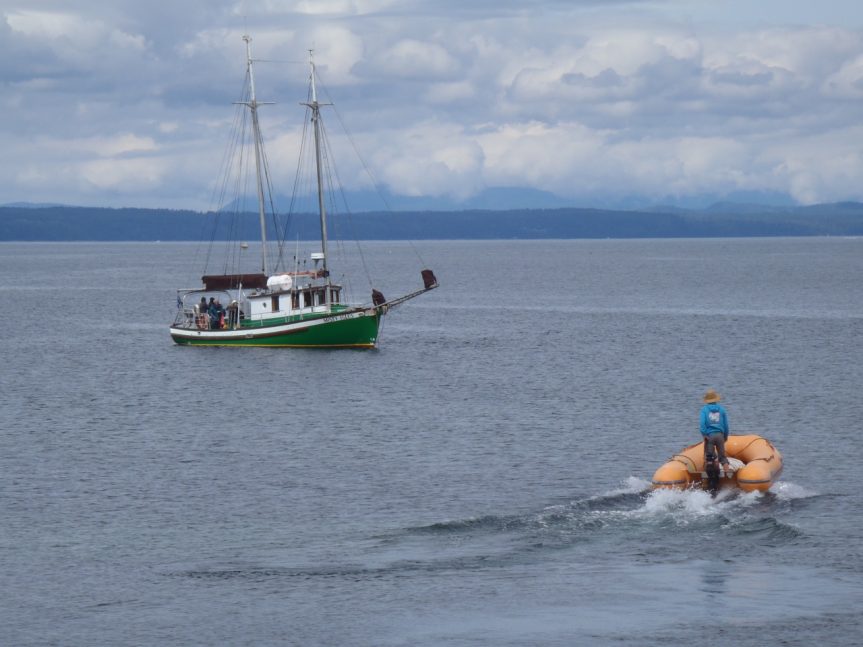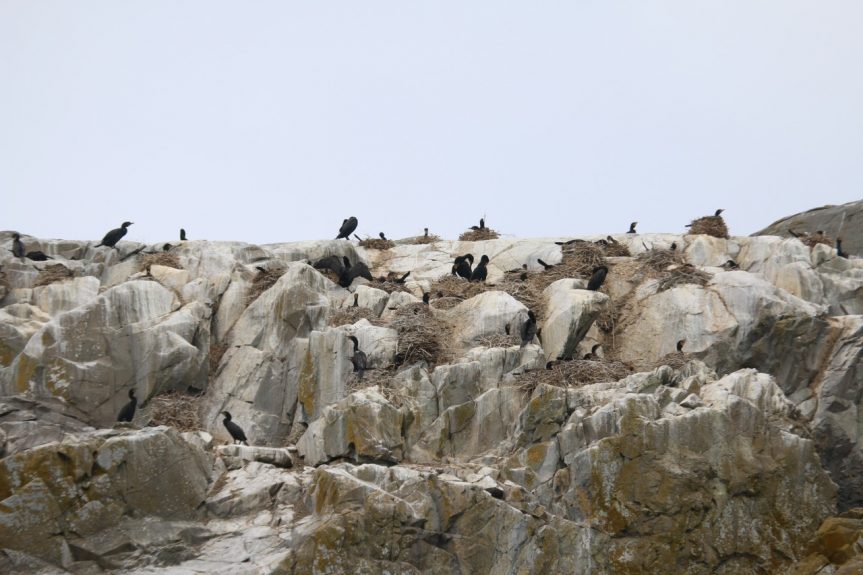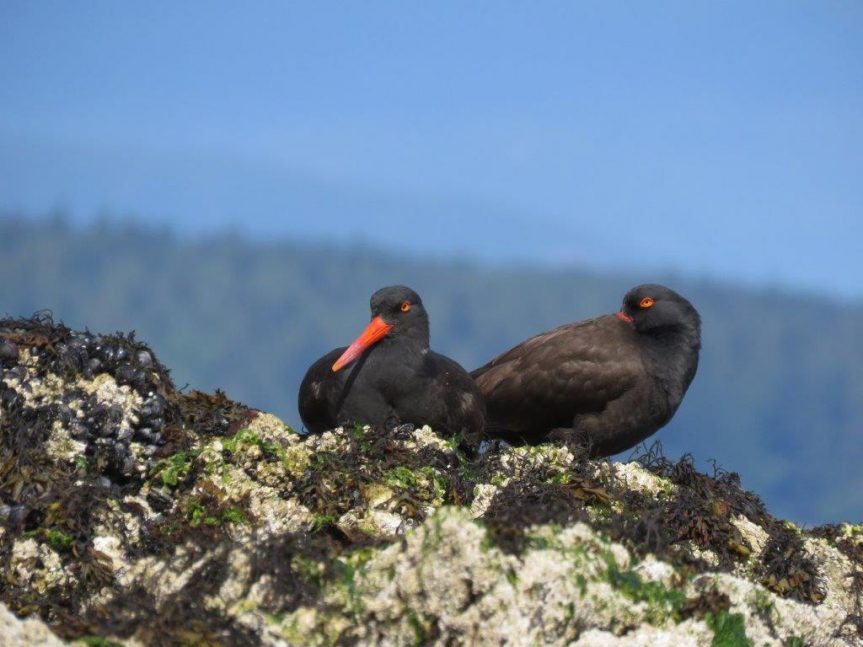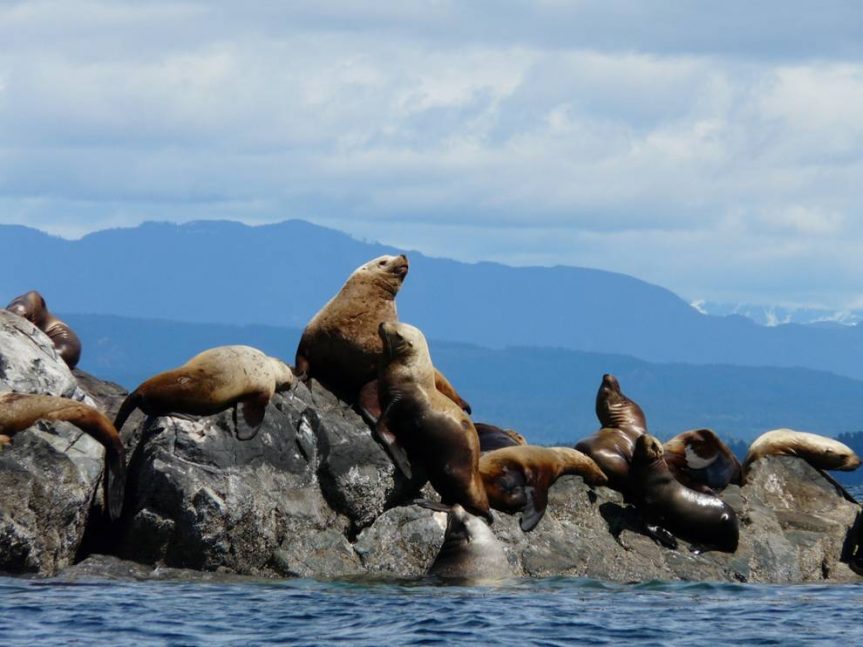Mitlenatch aboard the Misty Isles
by Sheila Peters 13 May 2023
Saturday, May 13, 2023 was a gorgeous day for 12 club members to join captain Jonas Fineman and naturalist George Sirk on the Misty Isles trip to Mitlenatch Island.
Just out of Lund, Major Islet was bright with monkey flowers and sea blush and noisy with both Steller and California sea lions. Some lucky folks saw harbour porpoises off Hernando Island.
Jonas provided delicious cookies, tea and coffee while we circumnavigated Mittlenatch before anchoring at Northwest Bay. The sound and smell of sea lions filled Camp and Echo Bays, quite an increase from George’s 1969 summer working there when he saw just one. Both species of cormorants were on their separate nesting sites nearby and glaucous-winged gulls staked out their territory on rocky outcrops around the island.
Walking the trails, we saw abundant camas and chocolate lilies. Jonas explained how the many First Nations that used the island would mark the flowering blue camas, a rare source of starch, in the spring to be sure they didn’t dig up the death camas by mistake when they returned in the fall. Other plants included Hooker’s onions, monkey flower, sea blush, yarrow, trailing blackberry, cascara, Indian celery and stretches of flowering Saskatoon shrubs, providing welcome shade where the trails curved through them. Two volunteers welcomed us, pointing out the sea lion skeleton assembled near their cabin. No snakes, though.
Throughout the trip, we saw 27 bird species including a common murre, four rhinoceros auklets, marbled murrelets, double-crested and pelagic cormorants; Bonaparte, ring-billed, mew and glaucous-winged gulls; surf and white-winged scoters, crows, oyster catchers, a Caspian tern, Brant and Canada geese, a Pacific loon, harlequins, and an eagle.
Thanks to our guides for sharing their knowledge and enthusiasm. And special thanks to Jonas for making the time for two of us to swim, a relief after the afternoon walks in the +25 heat.
Bengul and Cal Smith have kindly provided links to their Flickr accounts featuring more photos of the trip.
Cal: https://flic.kr/s/aHBqjAE3iR
Bengul: https://flic.kr/s/aHBqjAE3iR
The Mitlenatch Island Stewardship Team has a great website with more information about the island: https://www.mitlenatch.ca/





















































































































































